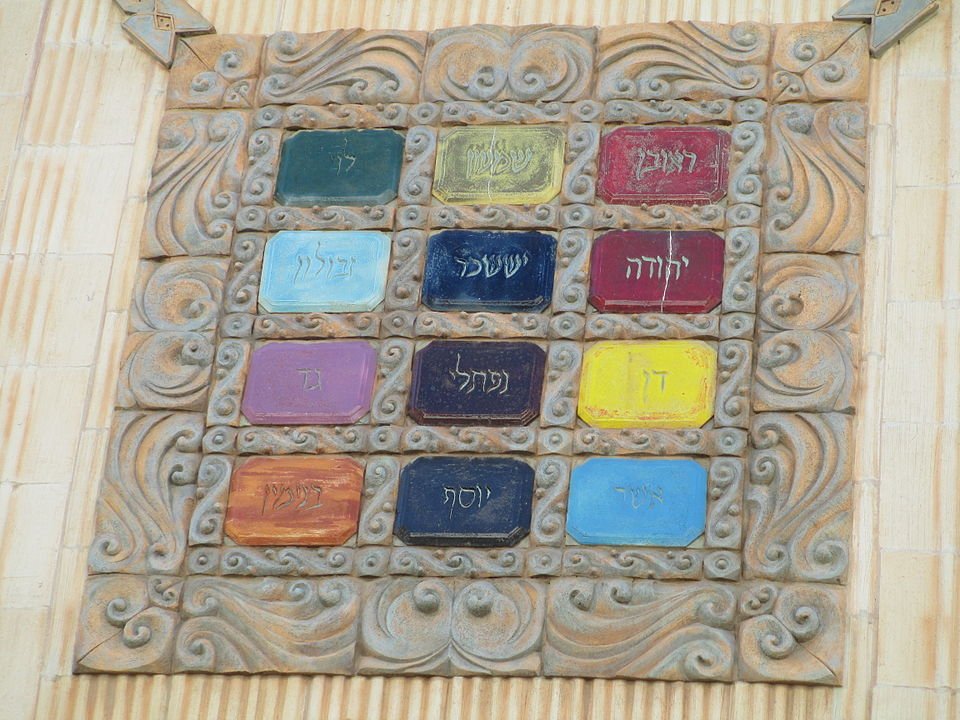THE HISTORY OF BIRTHSTONES
Birthstones. There's something about them that people love. It's a bit narcissistic, yes, but who doesn't like to prop themselves up a bit when it comes to your birthday. And what better way to give that occasion added meaning than by attaching a beautiful gemstone to it? When looking at birthstones from that perspective, it isn't hard to see why their popularity has continued to rise over the last century. However, that wasn't always their intent. Let's take the time then to look at the history of birthstones and how we've reached a place where everyone loves them, and how, more often than not, there is more than one per month.
ARE BIRTHSTONES BIBLICAL?
The earliest connection to Birthstones comes from the First Century historian Josephus. His interpretation of the Book of Exodus connects the twelve stones in Aaron's breastplate to the twelve tribes of Israel, the twelve months of the year, and the twelve signs of the zodiac. As you can see, that's a whole lot of "12's", so it's easy to see the correlation. Per the original text, the stones should include four rows. "The first row shall be Carnelian, Chrysolite, and Beryl; the second row shall be Turquoise, Lapis Lazuli and Emerald; the third row shall be Jacinth, Agate, and Amethyst; the fourth row shall be Topaz, Onyx, and Jasper."
The story diverges a bit from there, as different scholars have pointed out that there are other lists of the twelve stones, with some being more appropriate to Christians and so forth. It's an interesting story, and if you are interested in its historical importance, you should look it up. For our purposes, though, let's agree that someone came up with the idea of twelve stones for twelve months.
Sometime in the eighth to the ninth century, a different set of scholars began the practice of wearing the stones during its corresponding month. This practice later became whittled down during the sixteenth century as people started wearing their particular birthstone. It is agreed that the tradition is either Polish or German in origin.
MODERN BIRTHSTONES
Stemming from that religious beginning, it wasn't until 1912 that the western marketing machine standardized the practice and pitched birthstones as an official list. The National Association of Jewelers created the list, and other councils and groups have added to it ever since. Additionally, British jewelry groups adopted a slightly different list in 1937 to complicate things more.
So, where do we currently stand? The following list includes the official birthstones and those that may differ due to their Midcentury categorization or their British listing.
January: Garnet
February: Amethyst, (Hyacinth & Pearl – Midcentury)
March: Bloodstone, Aquamarine & (Jasper – Midcentury)
April: Diamond, (Sapphire – Midcentury) & (Rock Crystal – Britain)
May: Emerald, (Agate – Midcentury) & (Chrysoprase – Britain)
June: Pearl, Moonstone, Alexandrite, (Cat's Eye, Turquoise & Agate – Midcentury)
July: Ruby, (Turquoise, Onyx – Midcentury) & (Carnelian – Britain)
August: Sardonyx, Peridot, Spinel, (Carnelian, Moonstone & Topaz – Midcentury)
September: Sapphire, (Chrysolite – Midcentury) & (Lapis lazuli – Britain)
October: Opal, Tourmaline & (Aquamarine – Midcentury)
November: Topaz, Citrine & (Pearl – Midcentury)
December: Turquoise, Zircon, Tanzanite, (Bloodstone & Ruby– Midcentury)
How to Correlate Birthstones with Jewelry
As you can see, outside of January, there is a bit of movement between the months and countries. Here at theringadviser.com, we feel that a more extensive list gives you more options to play with and allows you to cater your birthstone to your particular taste. Ultimately, even if you are drawn to Birthstones because of their biblical connotations, you can see that a definitive list is hard to come by. Jewelry should bring you joy and happiness, and if a particular gem strikes your fancy, there’s no need to shy away from it, birthstone or not.
Birthstones can clearly be used for birthstone jewelry, Engagement rings, Mother’s Rings, Promise Rings, anything really. We’d argue actually that through the years, gemstone (birthstone) jewelry has been as much if not more popular with nobility and celebrities. Some famous examples include Empress Josephine’s Sapphire ring from Napoleon, Kate Middleton’s Blue Sapphire ring, Jackie Kennedy’s Emerald ring from John F. Kennedy, and countless others.
Nor should your Birthstone selection be limited to rings. The turquoise, emerald, and diamond necklace are among the many pieces of jewelry that belonged to Jacqueline Kennedy Onassis. As you see, using birthstones selectively with other gems or Diamonds can produce breathtaking pieces of jewelry, and they shouldn’t be dismissed simply because they don’t feature a Diamond as their focal point.
Let us know what your favorite birthstone is and if it happens to coincide with your birth month! You can also find more in-depth explanations on each particular birthstone linked above, as well as our article detailing Zodiacal Stones, which differ quite a bit from the Birthstone list and are far more absolute.
LOOKING FOR AN ENGAGEMENT RING?
Let us help you navigate birthstones and all the nuances that make buying a ring daunting. Contact us, and we will walk you through all the nuances that make buying an engagement ring daunting with our one-on-one help.




